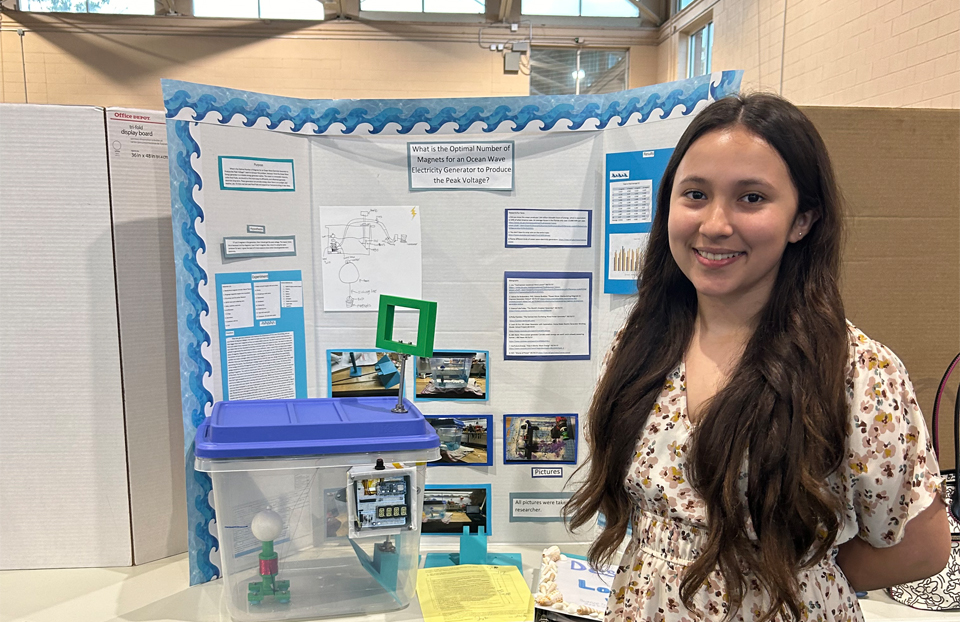Cooling off in the summer is easier with this middle schooler’s invention

Anyone who has competed in a sport under the hot summer sun understands how exhausting it can be. Sujan Vijayraj Shadrak, an 8th grader at Oak Ridge Middle School in Marion, Iowa, was an avid tennis player, and most of his classes were in the summer in the afternoon.
“When the weather was hot, I was exhausted quickly,” he said. Sujan felt like there had to be a way to easily get cool.
“For a while, I was continuously pondering ways to improve this challenge,” Sujan shared. “I did more research on this topic and could not find anything that could fulfill my needs. The things that came to my mind were to take a shower in cold water, use the car air conditioner or use a battery-operated fan.”
This prompted Sujan to invent his COG (Cool on the Go) device for his science fair project for the State Science and Technology Fair of Iowa, which earned him the Lemelson Early Inventor Prize. Sujan’s device, which is designed to look like a watch, is made of a thermoelectric cooler (TEC) that uses the Peltier effect to create a temperature difference between the junctions of two different types of materials.

The Peltier effect arises when a current is passed through a junction of two different materials, resulting in the production of heat. Sujan explained, “When the voltage is applied to the TEC, one side becomes coolder, and the other side becomes hotter.” He further shared, “The heat is removed from the hot side using a 12-volt fan and a heat sink. Next, the cold side is placed on the wrist and secured like a watch. When the body becomes hot, blood rushes to the skin’s surface, so a cold press on the blood vessels will accelerate the cool sensation for the whole body.”
Sujan learned about this effect when a mini-cooler in his home broke down. His father called in a service team to fix the issue, and the technician showed Sujan that it was the TEC that had failed and needed to be replaced. The technician explained that the TEC was a critical element to the cool, which led Sujan to conduct his own research on the benefits of TECs and the Peltier effect.
As part of his project, Sujan experimented with different types of Peltier tiles in order to see how the different tiles would affect the wrist and the body cooling off. Sujan’s work also involved identifying which TEC would be appropriate for personal cooling and finding a heat sink that would fit on a person’s wrist. For the TEC, Sujan conducted a “quick power analysis” to find the right cooler and consulted with some technicians to resolve his heat sink issue. “The biggest problem I faced was with the battery selection; I could not find a battery that would fit nicely on a wrist. At last, I found a battery that worked.”
During his research, Sujan learned that more than 600 people are killed annually from extreme heat. He hopes that his solution can help him help others.


